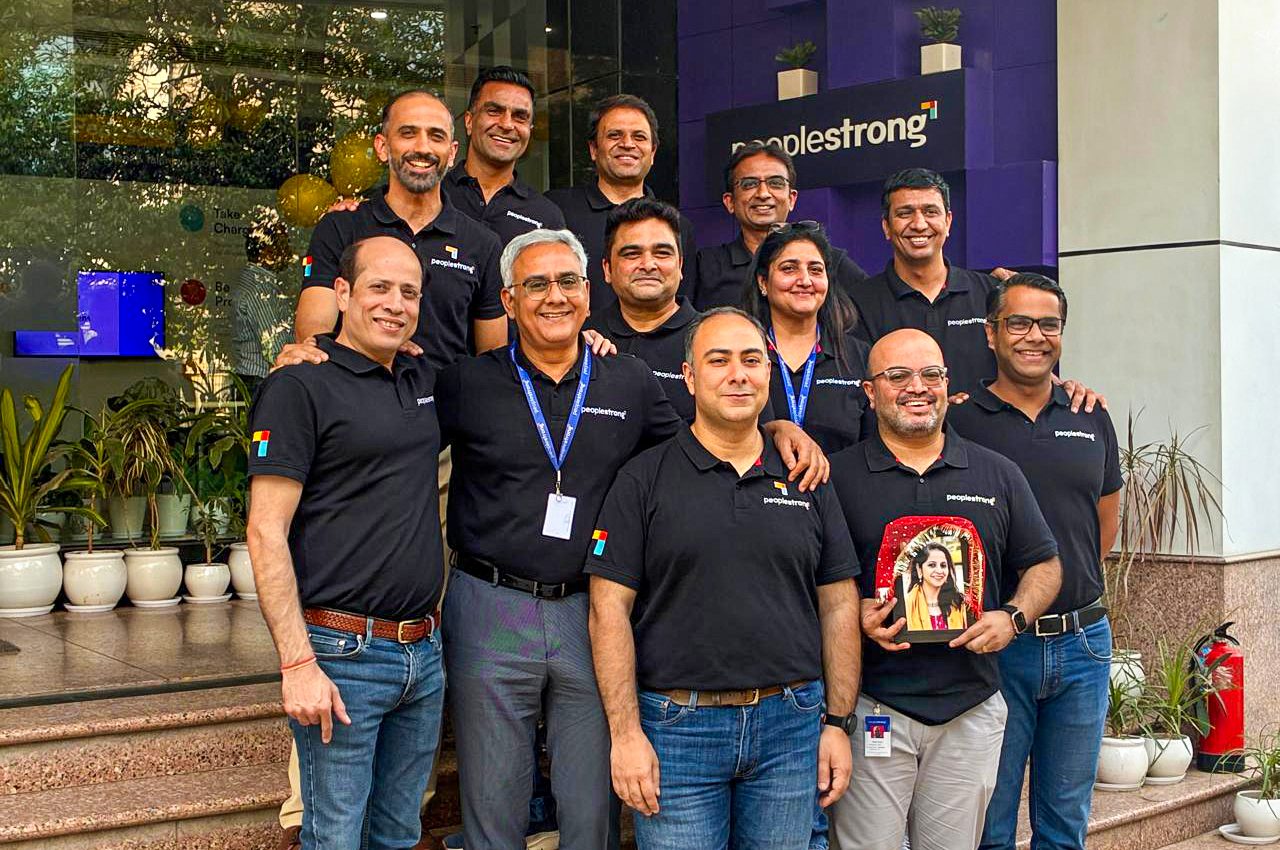In today’s dynamic job market, the ability to proactively plan recruitment strategies is crucial for any HR leader. Without a structured approach, HR professionals can find themselves caught in a reactive cycle, struggling to fill roles quickly without considering the broader implications of team dynamics and company culture.
This often leads to rushed decisions and talent mismatches, hampering long-term organizational goals. A well-rounded recruitment strategy, on the other hand, ensures a streamlined hiring process, aligns with strategic business initiatives, and improves candidate quality.
Companies can achieve a more effective recruitment strategy plan by embracing a comprehensive approach that includes planning timelines, refining internal processes, and understanding people management. In this blog, we’ll discuss crafting a recruitment strategy plan to recruit candidates. Let’s get into it.
Anatomy of a Recruitment Process
The recruitment process is a comprehensive approach tailored to meet the needs of organizations operating across multiple geographies. Here’s what the detailed process looks like:
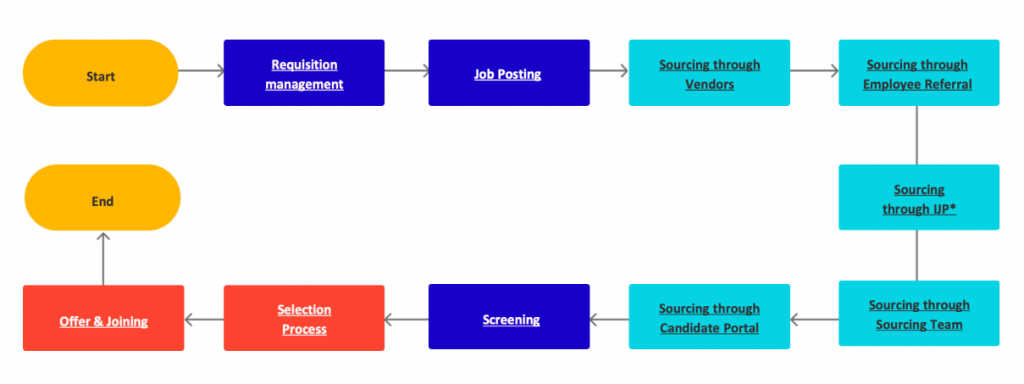
Let’s look at the detailed breakdown of each stage:
- Identifying the Hiring Needs: This initial stage involves determining the specific skills and roles required to support international operations. Understanding regional demands and global market trends is crucial to align recruitment with strategic business goals.
- Preparing the Job Description: Crafting a clear and precise job description is essential for attracting the right candidates. This should include specific qualifications, experience, and skills needed, tailored to each region’s cultural and regulatory nuances.
- Talent Search: Utilizing a variety of channels, such as job boards, social media, and professional networking sites, alongside local resources helps in reaching a diverse candidate pool. Effective talent search strategies consider local employment laws and cultural expectations.
- Screening and Shortlisting: This stage filters candidates based on predefined criteria, ensuring those who progress are the best fit for the role and the organization’s culture. This process must be adaptable to different legal frameworks and cultural practices across regions.
- Interviewing: It is vital to conduct culturally sensitive interviews, possibly in multiple languages. This may involve different technologies and methodologies to accommodate various time zones and communication styles.
- Evaluation and Offer of Employment: Post-interview evaluation should consider not only the candidate’s fit with the specific job requirements but also their potential integration into a diverse global team.
- Introduction and Induction of the New Employee: A well-planned induction program helps new hires integrate into the company culture and understand the organizational structure and expectations.
Suggested Read:
Recruitment Process Guide For HRs to Hire Top Talent
Recruitment Strategy Plan: A 7-Step Guide
A recruitment strategy plan is essential for organizations looking to secure top talent across various markets, ensuring a cohesive workforce that aligns with corporate goals. Here’s how it begins.
Step 1: Assess and Gather Your Requirements
Start by thoroughly assessing your hiring needs. This involves understanding and documenting the timeframes, headcount, budget, and recruitment sources while considering equity across all regions.
Establish a clear process workflow that outlines each stage of the recruitment cycle, from initial requisition to final hiring. This phase is crucial as it sets the foundation for a streamlined and effective recruitment strategy plan, allowing for adjustments based on real-time global market conditions and organizational needs.
Pro Tip: Ensure that all requirements comply with local laws and align with the company’s broader talent management and diversity goals.
Step 2: Job Posting: Lay out a Roles and Responsibility Draft
The second step in a recruitment strategy plan involves developing a comprehensive draft of roles and responsibilities. Here’s what the entire process looks like:
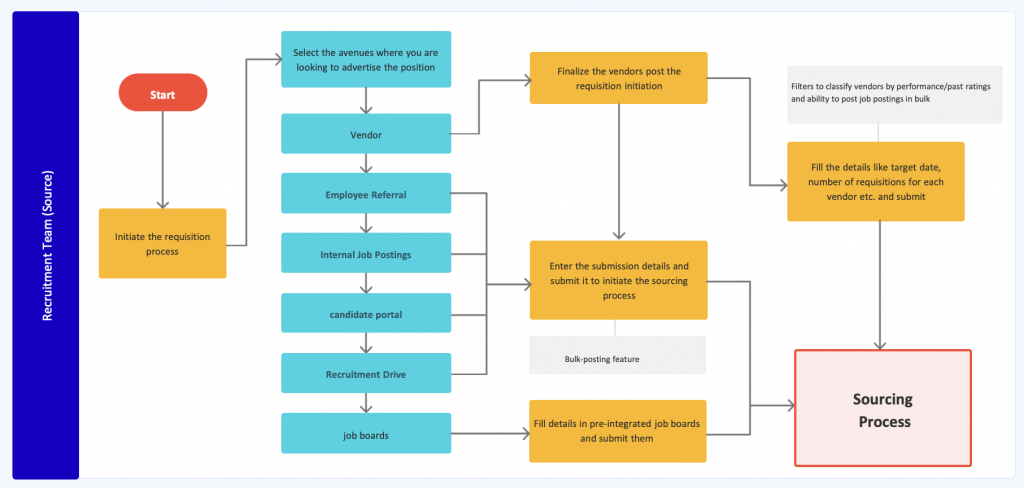
It starts with aligning the job’s specific duties with the overarching team goals and priorities.
To ensure that the role meets both immediate and long-term organizational needs, engage with team members and managers to gain a deep understanding of the daily responsibilities and the broader impact of the role.
This collaboration helps in identifying not only the necessary hard skills but also the soft skills and cultural fit that are crucial for success in a diverse environment.
Selecting the right job posting mediums is critical to reaching a global audience effectively.
- Opt for platforms with extensive international reach and consider using local job boards in key markets to attract the right talent.
- Additionally, leveraging job simulation exercises and short-term projects within current teams can provide practical insights into the skills and competencies needed for the role.
You can also use generative AI to write detailed job descriptions as needed:

Step 3: Sourcing Strategy Implementation
An effective sourcing strategy is pivotal in tapping into the global talent pool. This step involves thoroughly examining various sourcing methods that cater to international recruitment needs.
Here’s a look at the entire sourcing strategy process through vendors:
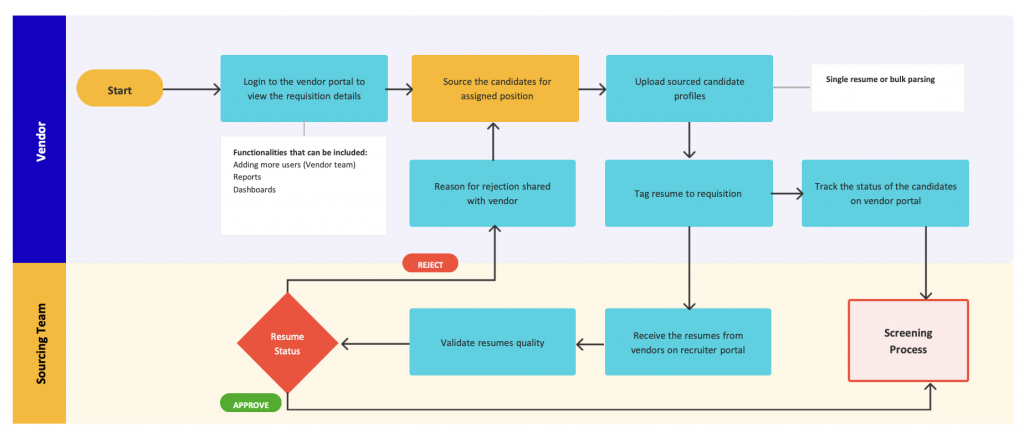
You need to utilize a mix of sourcing channels, including:
- Global recruitment vendors are known for their broad reach.
- Employee referral programs that leverage the existing workforce’s network.
- Internal job postings to promote upward mobility within the company.
- Direct sourcing techniques for targeted searches.
- Candidate portals that provide a steady stream of qualified applicants.
To effectively optimize recruitment channels and ensure agile responses to varying hiring scenarios, consider these strategic approaches:
- Regularly evaluate each recruitment channel’s effectiveness and make data-driven adjustments.
- Modify tactics based on performance analytics to align with role and regional requirements.
- Develop templates for sourcing strategies that can adapt to different hiring scenarios.
- Include factors like urgency of hire, skill set rarity, and regional demands in strategy templates.
Step 4: Screening Process
Establishing a robust recruitment screening process ensures that only the most appropriate candidates are selected for the recruitment process, saving time and resources in the later stages.
Here’s a quick view of how the entire process looks like:
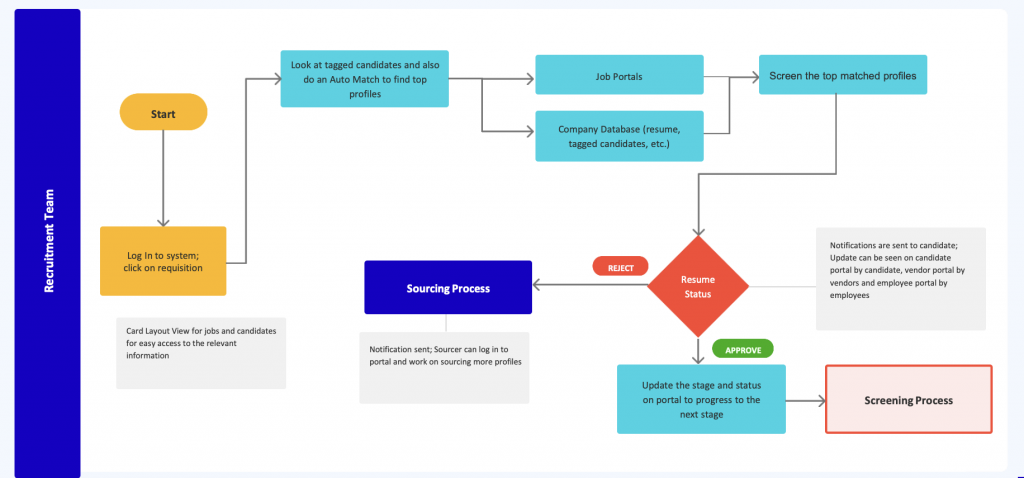
The following checklist ensures that the screening process is thorough and aligned with global standards, optimizing the recruitment workflow and improving the quality of hires:
- Develop a comprehensive checklist for effective screening that includes:
- Verification of candidate qualifications and experiences.
- Assessment of skills alignment with the job description.
- Evaluation of cultural fit within the company and the specific team.
- Review of communication skills, especially in roles requiring multi-regional collaboration.
- Background checks are compliant with local laws.
Suggested Read:
Recruitment Screening Process: A Definitive Guide for HRs
Step 5: Selection Process
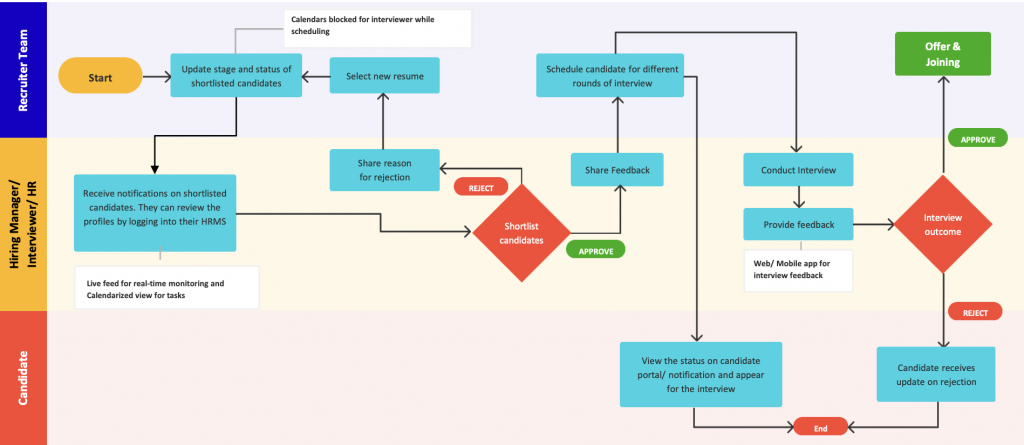
The selection process is a critical stage in recruitment, involving strategic shortlisting and comprehensive interviews to ensure the best fit for the role and the organization. Here are the things you need to make sure of during the selection process:
- Strategies for Shortlisting Candidates: Implement a structured approach to shortlist candidates by setting clear, measurable criteria based on the job specifications and the desired competencies. Utilize scoring systems or ranking methods to objectively evaluate candidates against these criteria, ensuring fairness and consistency across all regions.
- Managing Interviews: Organize interview panels that include multiple stakeholders from various departments and regions to gain diverse perspectives. Use a combination of behavioral and situational questions tailored to the nature of the role. Incorporate virtual interview tools to facilitate discussions with candidates in different time zones, maintaining efficiency and engagement.
- Inclusion of Multiple Stakeholders: Engaging different stakeholders in the interview process not only helps in assessing the candidate’s technical skills and experience but also ensures a well-rounded evaluation of their potential cultural and team fit. This collaborative approach helps in making more informed, consensus-driven hiring decisions.
- Cultural Fit Assessment: Assessing cultural fit is especially crucial. Develop strategies to evaluate how well candidates align with the company’s core values and can adapt to diverse cultural environments. This might include scenario-based questions that reveal candidates’ approaches to handling workplace diversity, conflict resolution, and collaboration across different cultures.
Step 6: Offer and Joining
This stage must be handled with precision and a clear understanding of global variations in employment standards and expectations. Here’s what the process looks like:
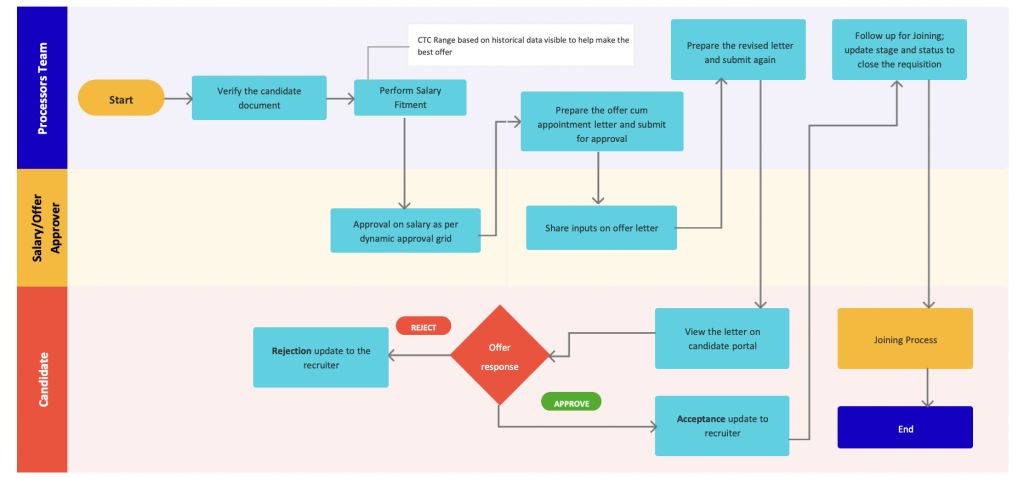
While negotiating the salary and going through the joining process, you must think about:
- Verification and Salary Fitment Procedures: Begin with comprehensive verification processes that include background checks, reference checks, and, where applicable, credential verification under local laws. Simultaneously, conduct salary fitment by evaluating the candidate’s experience, skills, and compensation norms for similar roles in the region.
- Offer Letter Preparation and Follow-Up Strategies: Draft a clear and detailed offer letter that includes job responsibilities, compensation details, benefits, and any other pertinent employment conditions. Ensure that the offer letter meets all legal requirements for the specific country. Implement a systematic follow-up strategy to keep candidates engaged and informed throughout the decision-making process.
- Coordination of Pre-Joining Formalities on a Global Scale: Coordinate with HR teams to manage pre-joining formalities such as signing the employment contract, planning the onboarding process, and setting up payroll and benefits. This coordination is essential to ensure a smooth transition and to help the new employee integrate into the company quickly and efficiently.
Step 7: Onboarding and Integration
The final step of the recruitment strategy plan is crucial for ensuring that new hires transition smoothly into their roles. Here’s how the process flow for the same looks like:
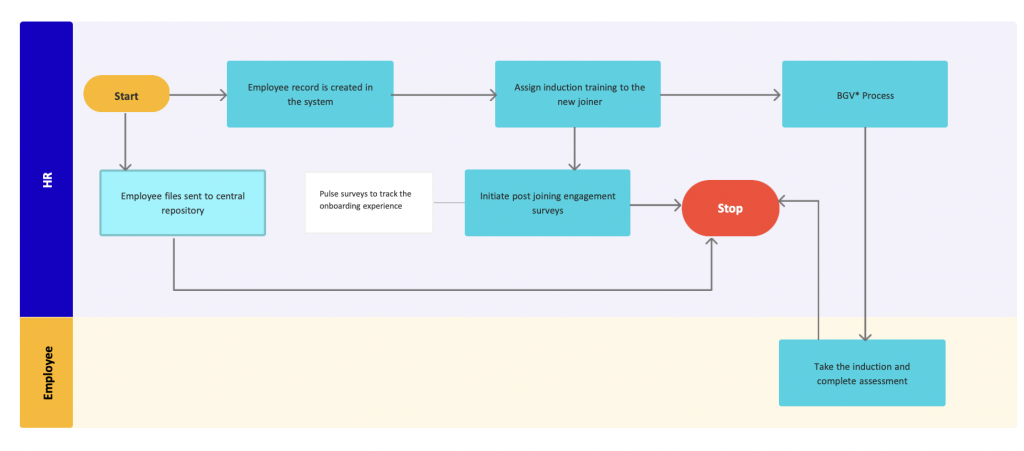
To ensure a smooth transition, focus on:
- Onboarding Checklist for a Seamless Integration Process: Develop a comprehensive onboarding checklist that covers all necessary steps to ensure a smooth transition. This checklist should include administrative tasks like setting up IT systems and access, HR documentation, and an orientation schedule.
- Introduction to Team Dynamics and Culture: Facilitate introductions to team members across different regions, emphasizing the importance of understanding team dynamics and the diverse cultures within the company. This might include virtual meet-and-greets, team-building activities, and mentoring programs that connect new hires with more experienced employees globally.
- Allocation of Necessary Resources for New Hires: Ensure that new employees have all the necessary resources from day one. This includes physical resources like work equipment and digital resources like access to internal networks and databases. Consider the logistical aspects of remote or hybrid work setups if applicable.
Suggested Read:
10 Proven Recruitment Strategies to Attract Top Talent
Measuring the Success of the Recruitment Strategy Plan
Measuring the success of a recruitment strategy plan is crucial for ensuring continuous improvement and alignment with organizational goals. Here’s how to effectively evaluate recruitment effectiveness:
1. Key Performance Indicators (KPIs)
Establish clear KPIs that reflect the efficiency and effectiveness of the recruitment process. Common KPIs include:
- Time-to-fill, which measures the speed of the hiring process
- Cost-per-hire, which assesses the financial impact of recruitment efforts
- Quality of hire, which evaluates the contribution of new hires to the company
- And candidate satisfaction, which gauges the recruitment experience from the applicant’s perspective
2. Tools and Technologies for Tracking and Analyzing Recruitment Metrics
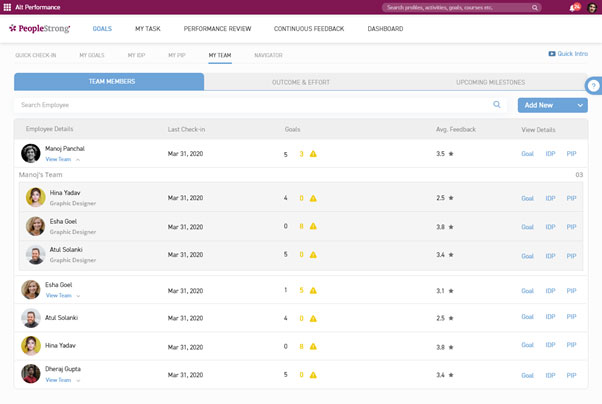
Leverage advanced recruitment software and HR analytics tools that allow for the tracking and analysis of these KPIs. While scouting for the right solution, look for software that includes features like:
- Real-Time Data Tracking
- Comprehensive KPI Analytics
- Trend Analysis Capabilities
- Customizable Dashboards
- Integration with Existing HR Systems
- Automated Feedback Collection
- Candidate Relationship Management
- Multi-Platform Accessibility
- Data Security and Compliance Features
- Scalable Infrastructure
3. Strategies for Continuous Improvement Based on Data Insights
Use the insights gained from these metrics to refine recruitment processes. This could involve adjusting sourcing strategies, improving candidate screening methods, or enhancing the candidate experience. Here are a few tips on how to go about this:
- Integrate regular feedback from candidates and hiring managers into the recruitment process to identify areas for improvement.
- Employ sophisticated analytics software to track effectiveness across various sourcing channels and adjust strategies accordingly.
- Organize bi-weekly meetings with the recruitment team to analyze recent hiring data and discuss strategic adjustments.
- Create dashboards that display key recruitment metrics in real-time, allowing for quick identification of trends and issues.
- Test different approaches in your recruitment process to see what works best in various regions and for different roles, then scale successful tactics.
- Map out the candidate’s journey to identify disconnects or bottlenecks in the application process and target improvements.
Recruitment Strategy Plan Example:
How Inspiro Built A Cohesive Employee Journey For Their 17,000+ Workforce Using PeopleStrong
Background
Inspiro, an outsourcing giant headquartered in Metro Manila with over 20 years in the BPO industry, faced significant challenges as it scaled. Their rapid growth required hiring up to 3000 employees seasonally and over 2000 monthly, which highlighted critical inefficiencies in their manual processes, particularly in payroll and training.
Strategy Implementation
PeopleStrong implemented a suite of integrated modules—Recruit, Onboarding, Core HR, Payroll, Leave and Attendance, Performance, and Learning—to streamline Inspiro’s HR operations. This integration aimed at eliminating isolated workflows and creating a unified platform that improved both the candidate and employee experience across various geographies.
Challenges Addressed
- Manual Processes: Automation addressed high turnaround times and low accuracy in payroll, reducing the time spent on payroll inputs from 30 person-hours to just 20 minutes.
- Lack of Unified System: Previously, critical stakeholders lacked real-time strategic insights due to isolated modules. PeopleStrong’s solution provided a cohesive view of people’s data, enhancing decision-making.
- Scalability in Recruitment: The Recruit module enabled Inspiro to hire seamlessly and onboard over 2000 employees monthly, significantly enhancing their capacity to manage large-scale recruitment efficiently.
Technological Enhancements
- HR Chatbot: The AI-enabled chatbot Jinie automatically resolves query, reducing the time spent on employee queries and improving internal communication.
- Data Analytics: Actionable reporting and analytics were utilized to create over 2500 employee reports in just 15 minutes, a task that previously took 5 person-hours.
- Learning and Development: Deployment of 47 training modules for 7000 employees through the system streamlined the training process and ensured continuous employee development.
Impact
- The digital transformation significantly reduced operational times and costs while improving the accuracy and speed of HR processes.
- Enhanced through streamlined onboarding, continuous learning opportunities, and efficient query handling.
- The integration of recruitment channels, such as the career page and employee referrals, led to a 52% increase in candidates sourced monthly.
Lessons Learned and Best Practices
- Comprehensive Integration: The case of Inspiro underscores the importance of a fully integrated HR system that can scale with the company’s growth and adapt to dynamic hiring needs.
- Technology Utilization: Leveraging advanced technologies like AI for routine tasks and analytics for strategic decisions can transform HR operations.
- Continuous Improvement: Ongoing assessment and adjustments in HR technologies ensure that the system evolves with the organization’s needs and external changes in the labor market.
Suggested Read:
Build an Effective Recruitment Strategy with 10 Proven Tactics
In Conclusion
Organizations aiming to enhance their recruitment strategy plan should consider integrating advanced HR technologies that streamline operations and improve the candidate and employee experience.
PeopleStrong, with its comprehensive HR Tech 4.0 platform, is ideally positioned to assist businesses in developing and executing robust recruitment strategies. By adopting PeopleStrong’s solutions, you can benefit from automated workflows, data-driven insights, and a cohesive platform that enhances every stage of the recruitment process.
Optimize your hiring process and align it with the organization’s broader objectives. Contact the experts at PeopleStrong today.



